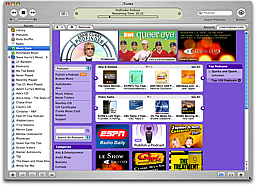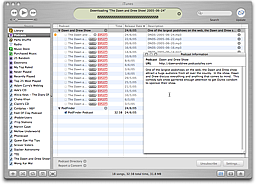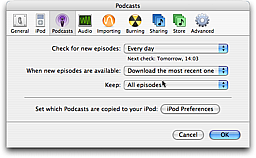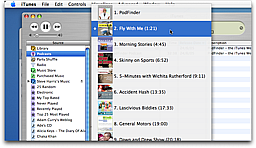Feeder 1.1.3, iTunes, etc
July 5th, 2005 by Steve HarrisApologies for the lack of updates to the blog recently. Mostly this is because I’m busy, but also my site has been seeing a lot more traffic since the iTunes podcasting release and my server had a few creaky moments last week; I didn’t want to add the the problem.
I released Feeder 1.1.3 today. This doesn’t include the iTunes extensions and is mostly a bug fix release to clear the decks before version 1.2, which I now expect to be ready by early August. I have updated the main site to reflect this.
In the meantime, I’ve designed the interface for 1.2 and estimated how long it will take to produce and test. It won’t just be an iTunes-related release either. There are a few other things going in there that either have been requested and promised or which will make support work easier (such as an FTP log). It does mean that some of the things I’d hoped to get in there will be postponed, but that’s OK because nobody has asked for them yet.
Sam Ruby, one of the authors of FeedValidator, is threatening to throw up an Undecipherable (sic) Specification Error if the validator encounters the <itunes:block>, <itunes:image> or <itunes:link> tags.
In Feeder I will implement all tags as per the example feed shown in Apple’s specification, but there is not an example for the
<itunes :block />
…so that its presence indicates the item or feed should be blocked. It could be…
<itunes :block>Yes</itunes:block> <itunes:block>No</itunes>
…as appropriate to indicate clearly the purpose of the tag or it could be something completely different. Until we find out, the option will remain disabled in Feeder. I don’t see this as a huge problem, because most people will be using these tags so that their show can be listed nicely in the iTunes Music Store. If FeedValidator throws up that indecipherable specification error for those tags mentioned above, it probably won’t be long until things become more clear.
Note also that your feed will work without any of these tags in the iTunes Music Store, it just doesn’t look as cool.



